Technology Solutions 1166 1166 Bluetooth Rugged UHF RFID Reader. Models 1166-AS1 and 1166-AX1 User Manual User guide
Technology Solutions (UK) Ltd 1166 Bluetooth Rugged UHF RFID Reader. Models 1166-AS1 and 1166-AX1 User guide
User guide
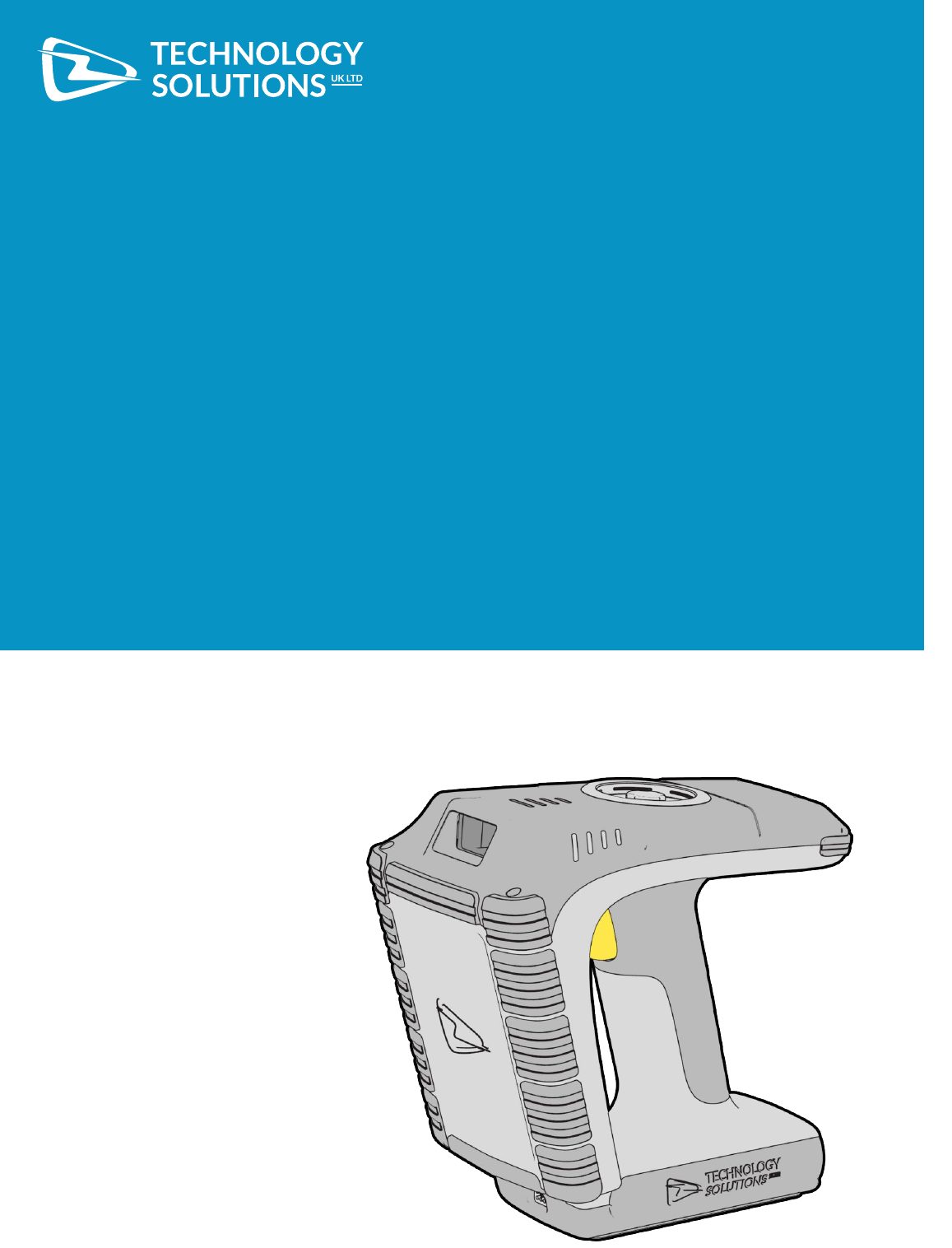
USER GUIDE:
1166
BLUETOOTH
®
UHF RFID READER
www.tsl.com
Design • Development • Manufacture
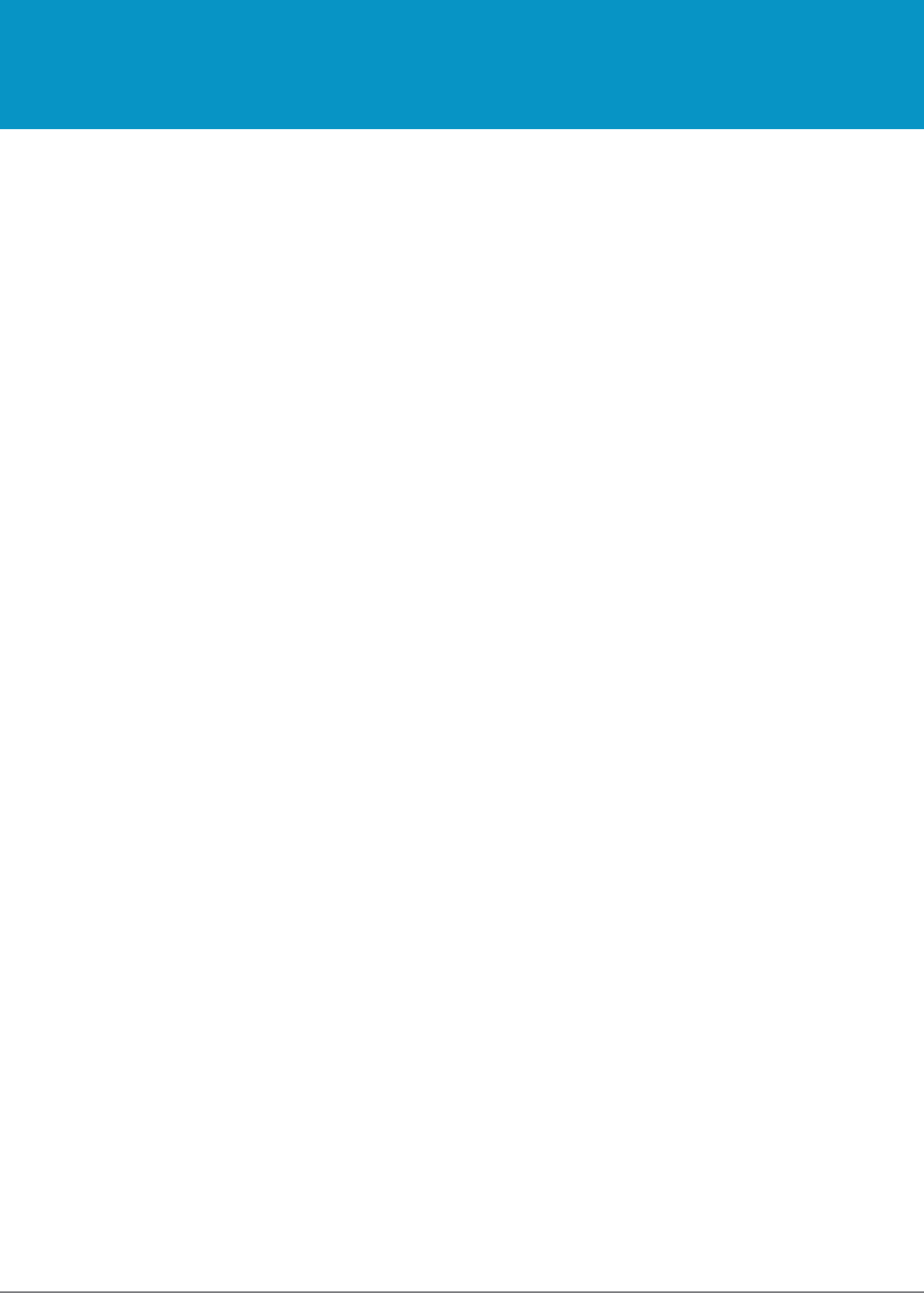
1166 UHF Reader User Guide V1.00© Technology Solutions (UK) Ltd 2016 2
TERMS & CONDITIONS
© 2016 TSL. All rights reserved.
No part of this publication may be reproduced or used in any form, or by any electrical or mechanical means,
without permission in writing from Technology Solutions (UK) Ltd. This includes electronic or mechanical means,
such as photocopying, recording, or information storage and retrieval systems. The material in this manual is
subject to change without notice.
Technology Solutions (UK) Ltd (TSL) reserves the right to make changes to any product to improve reliability,
function, or design. TSL does not assume any product liability arising out of, or in connection with, the application
or use of any product, circuit, or application described herein. No license is granted, either expressly or by
implication, estoppel, or otherwise under any patent right or patent, covering or relating to any combination,
system, apparatus, machine, material, method, or process in which TSL products might be used. An implied
license exists only for equipment, circuits, and subsystems contained in TSL products. TSL and the TSL logo are
registered trademarks of TSL. Other product names mentioned in this manual may be trademarks or registered
trademarks of their respective companies and are hereby acknowledged.
All software is provided strictly on an “as is” basis. All software, including firmware, furnished to the user is on
a licensed basis. TSL grants to the user a non-transferable and non-exclusive license to use each software or
firmware program delivered hereunder (licensed program). Except as noted below, such license may not be
assigned, sublicensed, or otherwise transferred by the user without prior written consent of TSL. No right to
copy a licensed program in whole or in part is granted, except as permitted under copyright law. The user shall
not modify, merge, or incorporate any form or portion of a licensed program with other program material, create
a derivative work from a licensed program, or use a licensed program in a network without written permission
from TSL. The user agrees to maintain TSL’s copyright notice on the licensed programs delivered hereunder, and
to include the same on any authorized copies it makes, in whole or in part. The user agrees not to decompile,
disassemble, decode, or reverse engineer any licensed program delivered to the user or any portion thereof.
TSL reserves the right to make changes to any software or product to improve reliability, function, or design.
TSL does not assume any product liability arising out of, or in connection with, the application or use of any
product, circuit, or application described herein.
iPad, iPhone, iPod, iPod classic, iPod nano, iPod shuffle, and iPod touch are trademarks of Apple Inc., registered
in the U.S. and other countries. iOS is a registered trademark of Apple Inc.
“Made for iPod,” “Made for iPhone,” and “Made for iPad” mean that an electronic accessory has been designed
to connect specifically to iPod, iPhone, or iPad, respectively, and has been certified by the developer to meet
Apple performance standards. Apple is not responsible for the operation of this device or its compliance with
safety and regulatory standards. Please note that the use of this accessory with iPod, iPhone, or iPad may affect
wireless performance.
The
Bluetooth
® word mark and logos are registered trademarks owned by Bluetooth SIG, Inc. and any use of
such marks by Technology Solutions (UK) Ltd is under license. Other trademarks and trade names are those of
their respective owners.
www.tsl.com
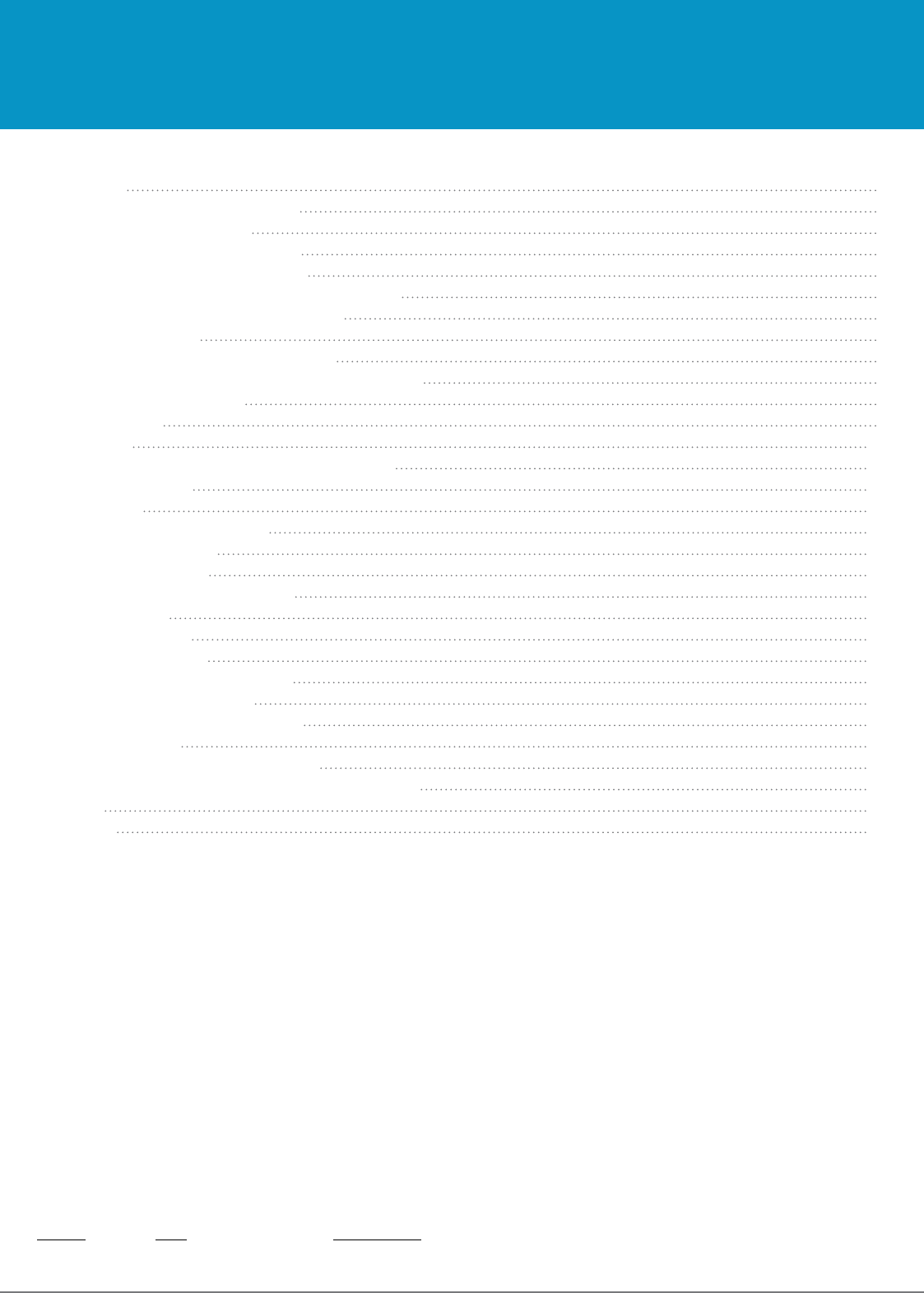
1166 UHF Reader User Guide V1.00© Technology Solutions (UK) Ltd 2016 3
History
Version Date Modifications
1.00 29/03/2016 Document creation
CONTENT
Introduction 4
Parts of the 1166 UHF Reader 4
Using the 1166 UHF Reader 5
Battery Installation or Removal 5
Charging and USB Connection 6
Setting up the 1166 Docking Station Kit 6
Using the 1166 Docking Station 6
Button Operation 7
Primary button Click and Hold 7
Secondary Button Double Click and Hold 7
Reading Transponders 8
Status LEDs 9
Connections 10
Bluetooth
® wireless technology connection 10
Embedded SD Card 11
Summary 11
Auto Run File (AUTO.TXT) 11
Log File (LOG.TXT) 11
Software Development 13
Troubleshooting and Maintenance 14
Maintenance 14
Troubleshooting 14
Regulatory information 15
Information to the user – FCC 15
RF Exposure Guidelines 15
Canadian Warning Statements 15
Laser Warning 17
Health and Safety Recommendations 18
Waste Electrical and Electronic Equipment (WEEE) 19
Warranty 19
About TSL 21
www.tsl.com
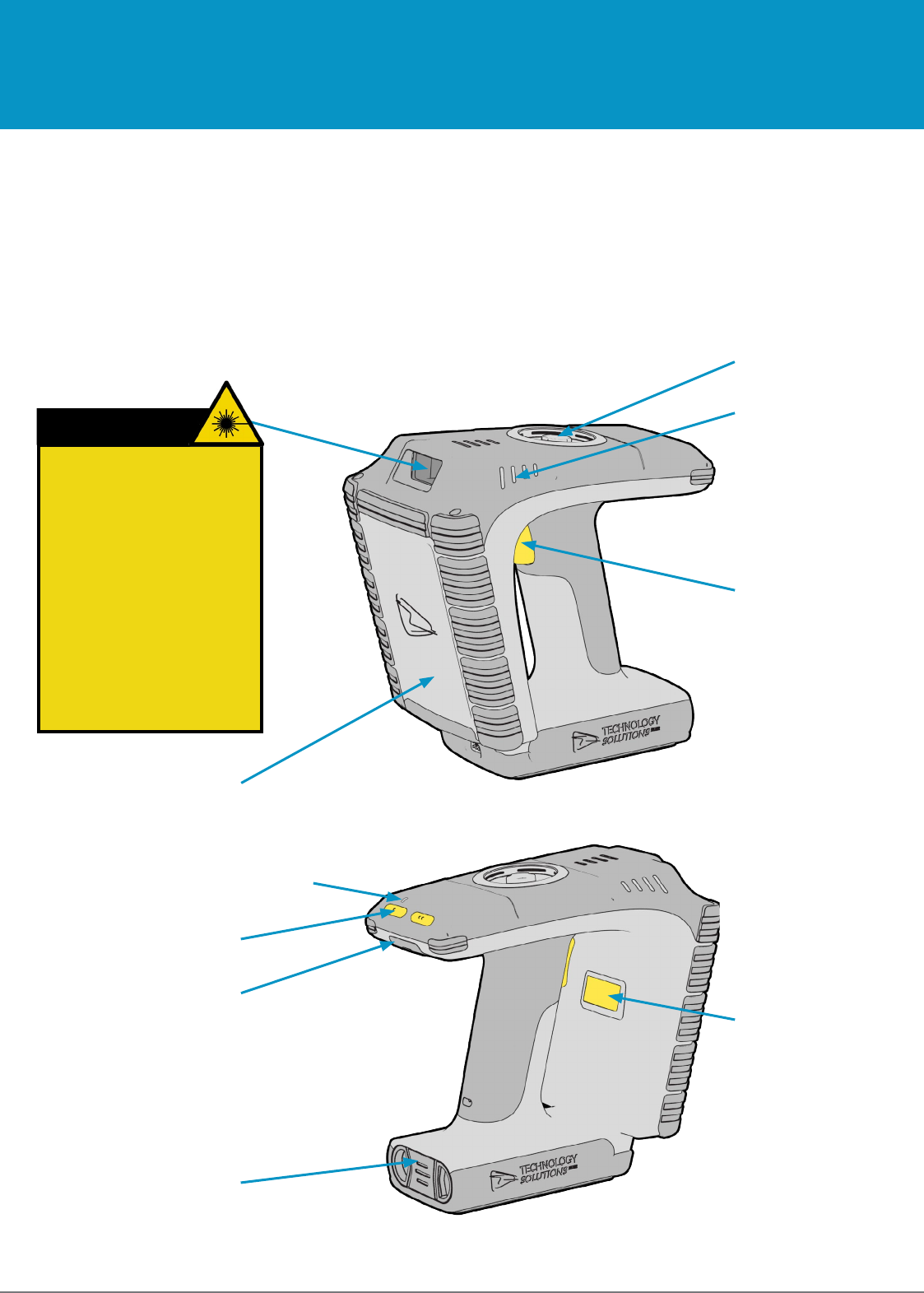
1166 UHF Reader User Guide V1.00© Technology Solutions (UK) Ltd 2016 4
Technology Solutions’ 1166 UHF Reader provides Ultra High Frequency (UHF) Radio Frequency Identification
(RFID), with optional barcode scanning functionality. The unit can be used stand alone or paired with a
Bluetooth
®
wireless technology enabled host device. It can be used with UHF transponders including the EPC Global Class 1
Generation 2 transponders.
INTRODUCTION
PARTS OF THE 1166 UHF READER
Pop-Loq Connector
Status LEDs
Trigger Button
UHF Antenna
FIGURE 1: Parts of the 1166 UHF Reader
WARNING
LASER LIGHT. DO NOT STARE
INTO BEAM. CLASS 2 LASER
PRODUCT.
LASERSTRAHLUNG NICHT IN
DEN STRAHL BLICKEN. LASER
KLASSE 2.
LUMIÈRE LASER - NE
PAS REGARDER DANS LE
FAISCEAU. APPAREIL À LASER
DE CLASSE 2.
630-680nm, 1mW
Battery cover
Lanyard loop
Connection Status LED
Power Button
Laser Warning
Label
www.tsl.com
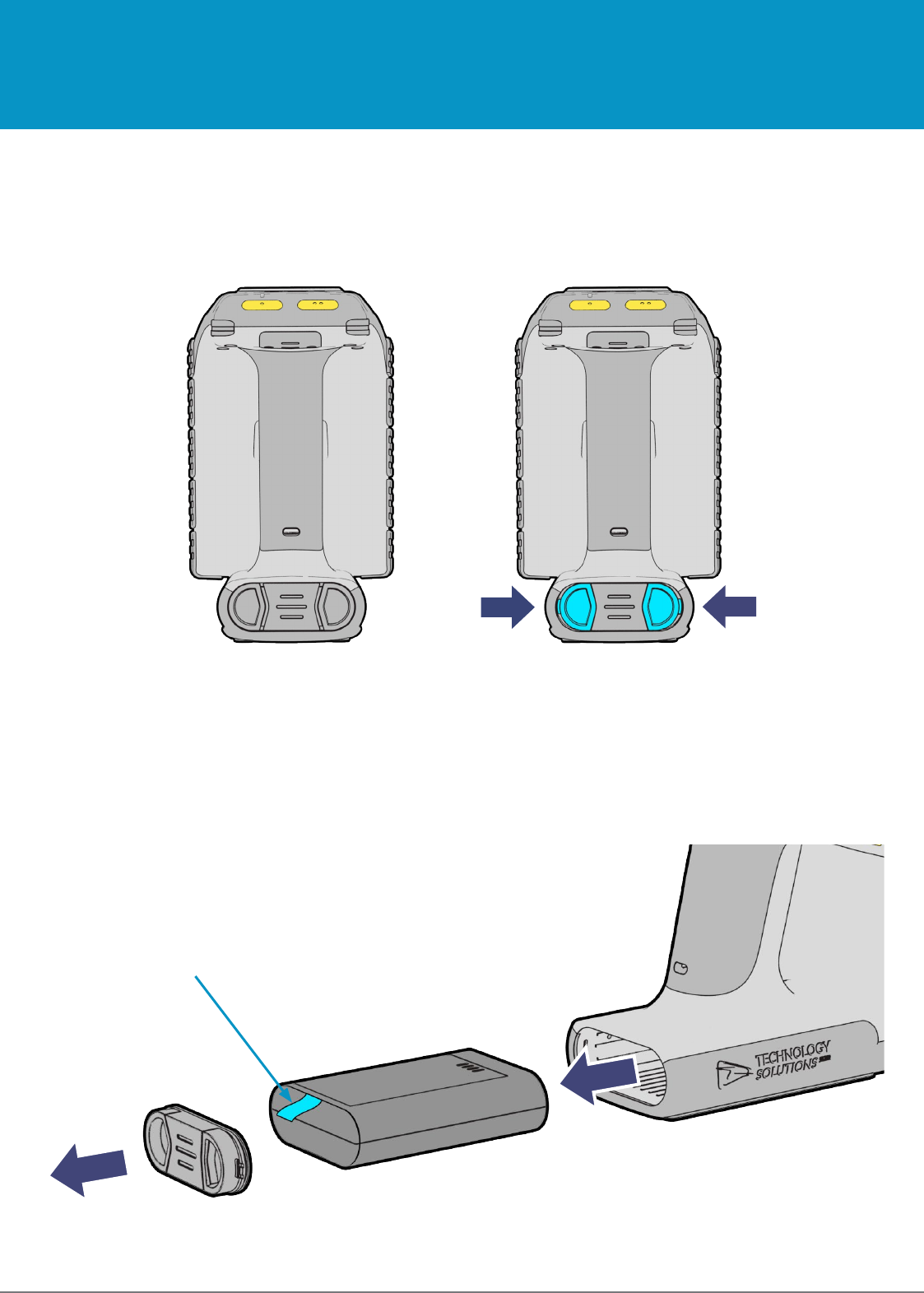
1166 UHF Reader User Guide V1.00© Technology Solutions (UK) Ltd 2016 5
USING THE 1166 UHF READER
BATTERY INSTALLATION OR REMOVAL
To access the battery, first remove the battery cover by squeezing together the sliders as shown in figure 3. The
battery can them be removed by pulling on the battery tab and sliding it out.
FIGURE 2: Releasing the battery cover
FIGURE 3: Battery Removal
Battery pull tab
www.tsl.com
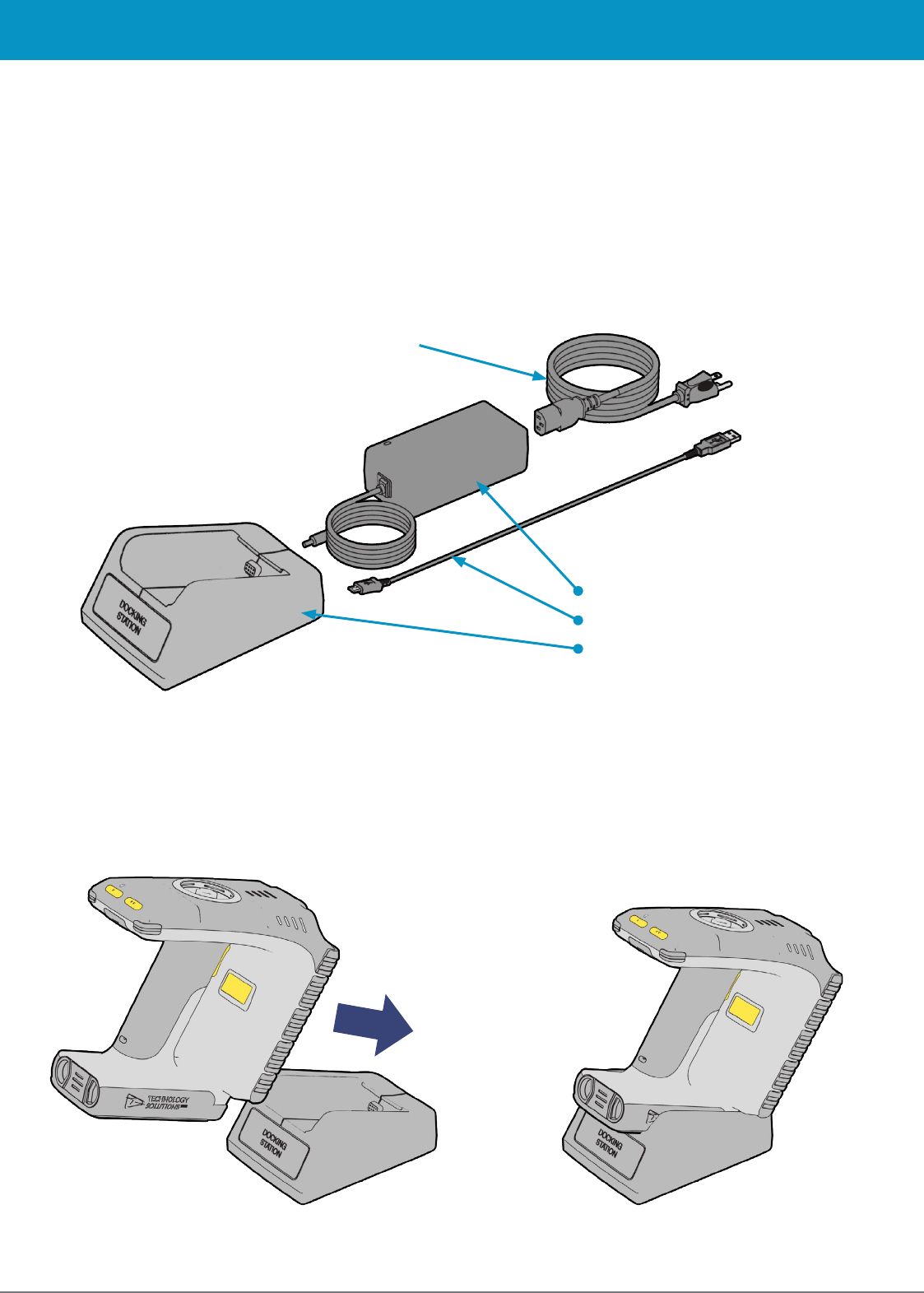
1166 UHF Reader User Guide V1.00© Technology Solutions (UK) Ltd 2016 6
USING THE 1166 UHF READER
CHARGING AND USB CONNECTION
SETTING UP THE 1166 DOCKING STATION KIT
The 1166 UHF Reader kit uses a dedicated Docking Station for charging and synchronisation. The Docking Station
Kit includes the dock, a power supply unit and a Mini USB cable. A separately purchased IEC mains cable is also
required. The Mini USB cable and power cable are inserted into the 1166 Docking Station in the orientation shown
below. Note that both cables plug into the back of the docking station at a slight upwards angle.
FIGURE 5: Attaching the Micro USB cable
USING THE 1166 DOCKING STATION
To dock the 1166 UHF Reader, slide it into the docking station in the direction shown:
1166-CRD-01-KIT:
65W Power Supply
Mini USB Cable
1166 Docking Station
FIGURE 4: Components required for charging the 1166 UHF Reader
IEC Mains Cable
(region specific)
www.tsl.com
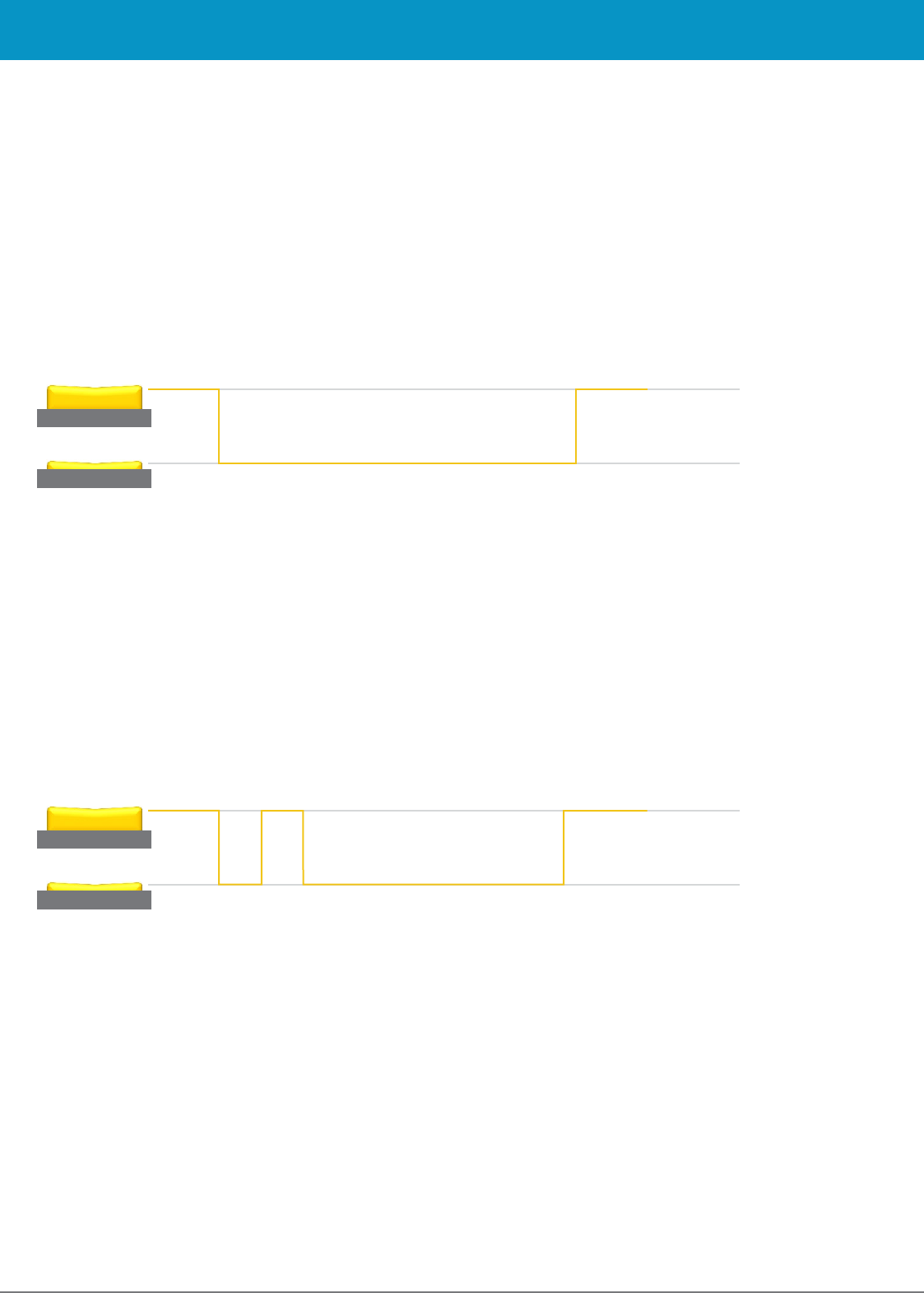
1166 UHF Reader User Guide V1.00© Technology Solutions (UK) Ltd 2016 7
USING THE 1166 UHF READER
BUTTON OPERATION
The 1166 UHF Reader has a Primary button action and a Secondary button action which can be initiated by
different button clicks: By default, the Primary action scans for UHF transponders, whilst the Secondary action
initiates the laser barcode scanner (Barcode scanning is only available with the 2D Imager Antenna variant). Which
operation is performed depends on the way in which the button is pressed. The Single and Double press button
options are also programmable.
PRIMARY BUTTON CLICK AND HOLD
- UHF Transponder Read
The primary button click is a standard button action:
●To initiate a primary button click press and hold the trigger button.
●To terminate a primary button click release the trigger button.
In the default configuration the 1166 UHF Reader scans for UHF transponders as the primary function. The 1166
UHF Reader will continue to scan for UHF transponders while the button is pressed. It will stop scanning once the
button is released (and the current operation completes).
SECONDARY BUTTON DOUBLE CLICK AND HOLD
– Barcode Scan (2D Imager Variant only)
The secondary button click is a single click quickly followed by a second press (press-release-press).
●To initiate a secondary button click press then release then press and hold the trigger button.
●To terminate a secondary button click release the trigger button.
In the default configuration the 1166 UHF Reader scans for barcodes as the secondary function. The 1166 UHF
Reader will continue to scan for a barcode while the button is pressed. It will stop scanning when any of the
following conditions are met:
●A barcode is scanned.
●The button is released.
●The barcode engine times out.
>
>
>
>
>
www.tsl.com
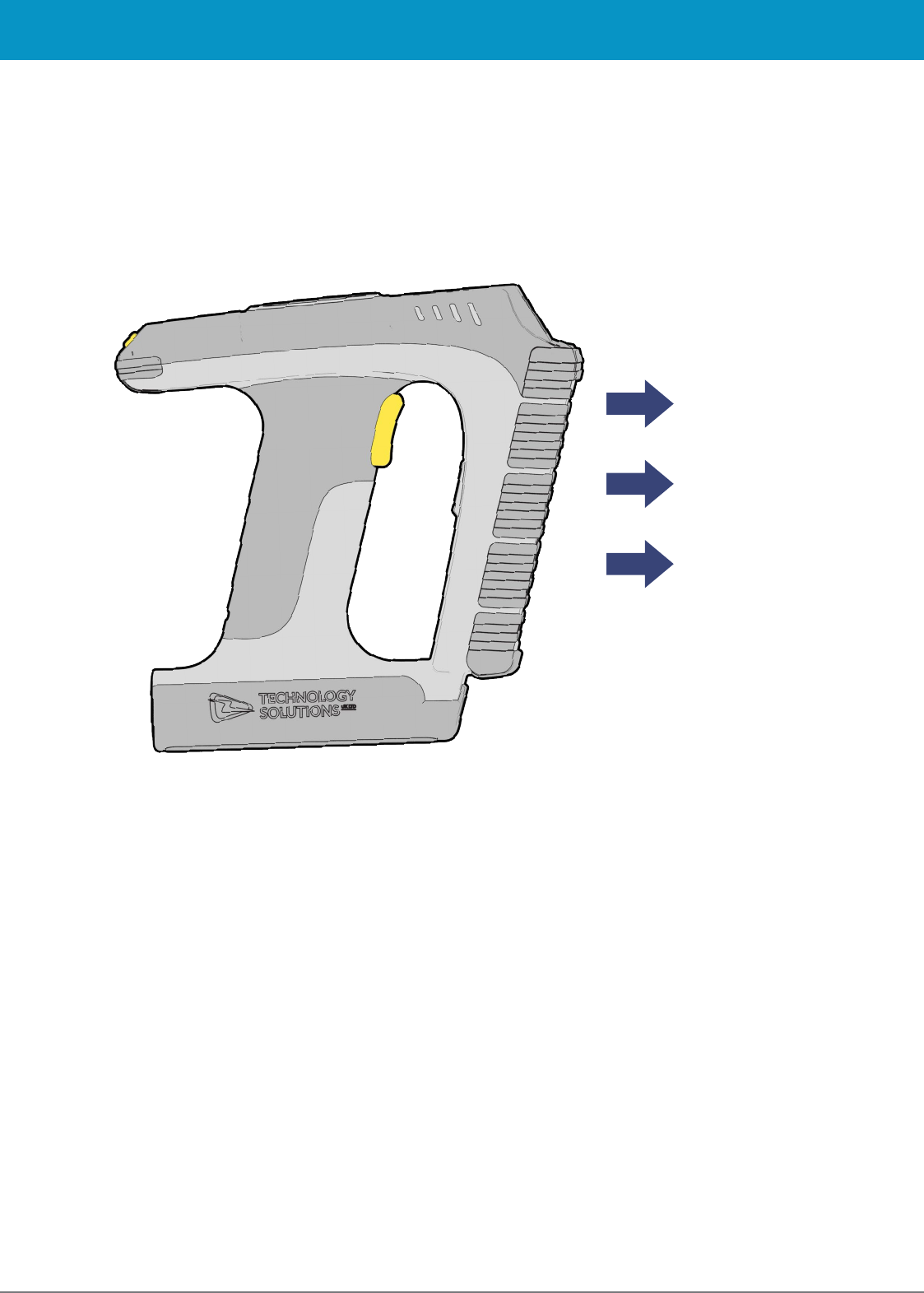
1166 UHF Reader User Guide V1.00© Technology Solutions (UK) Ltd 2016 8
USING THE 1166 UHF READER
READING TRANSPONDERS
RFID transponders can be read when they are in range of the antenna. The antenna is located on the front of the
1166 UHF Reader. The range at which a transponder can be read depends on the transponder type and size, and
the number of transponders in the field.
The UHF reader reads
transponders in front
of the antenna
FIGURE 6: Antenna location and read direction
www.tsl.com
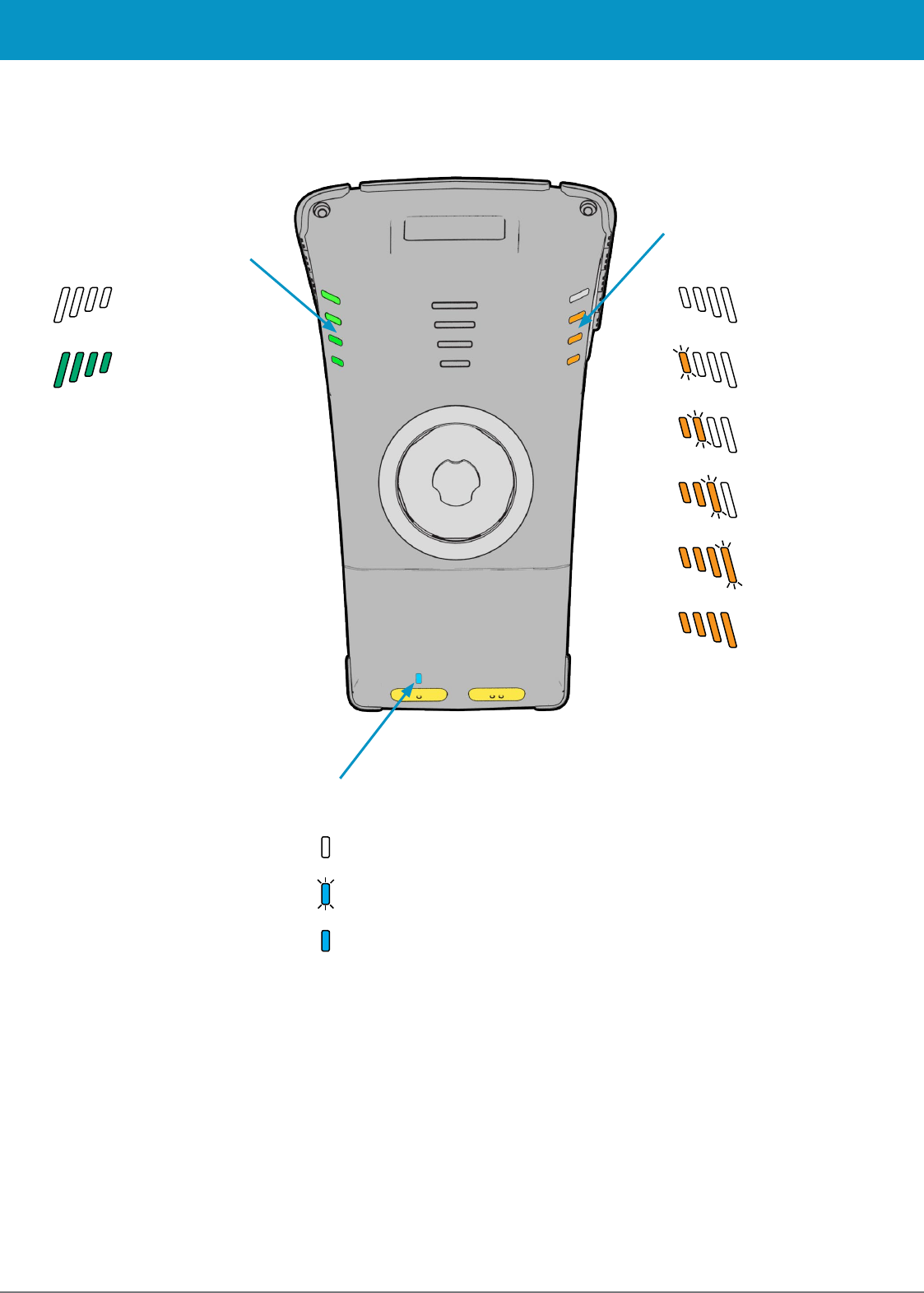
1166 UHF Reader User Guide V1.00© Technology Solutions (UK) Ltd 2016 9
LED INDICATING CONNECTION STATUS
STATUS LEDS
USING THE 1166 UHF READER
FIGURE 7: Location of Status LEDs
LEDS INDICATING
CHARGING STATUS
LEDS INDICATING TAG/
BARCODE READ
Battery Charging, battery
level less than 25%
Battery Charging, battery
level between 75 and 99%
Battery Charging, battery
level between 25 and 50%
Battery Charging, battery
level between 50 and 75%
Battery Fully Charged
All off - Not Charging
Off - The reader is not awake
Flashing - Reader is awake but there is no connection
On - Reader is awake and connected to a host
Tag/barcode
successfully read
All off - nothing read
www.tsl.com
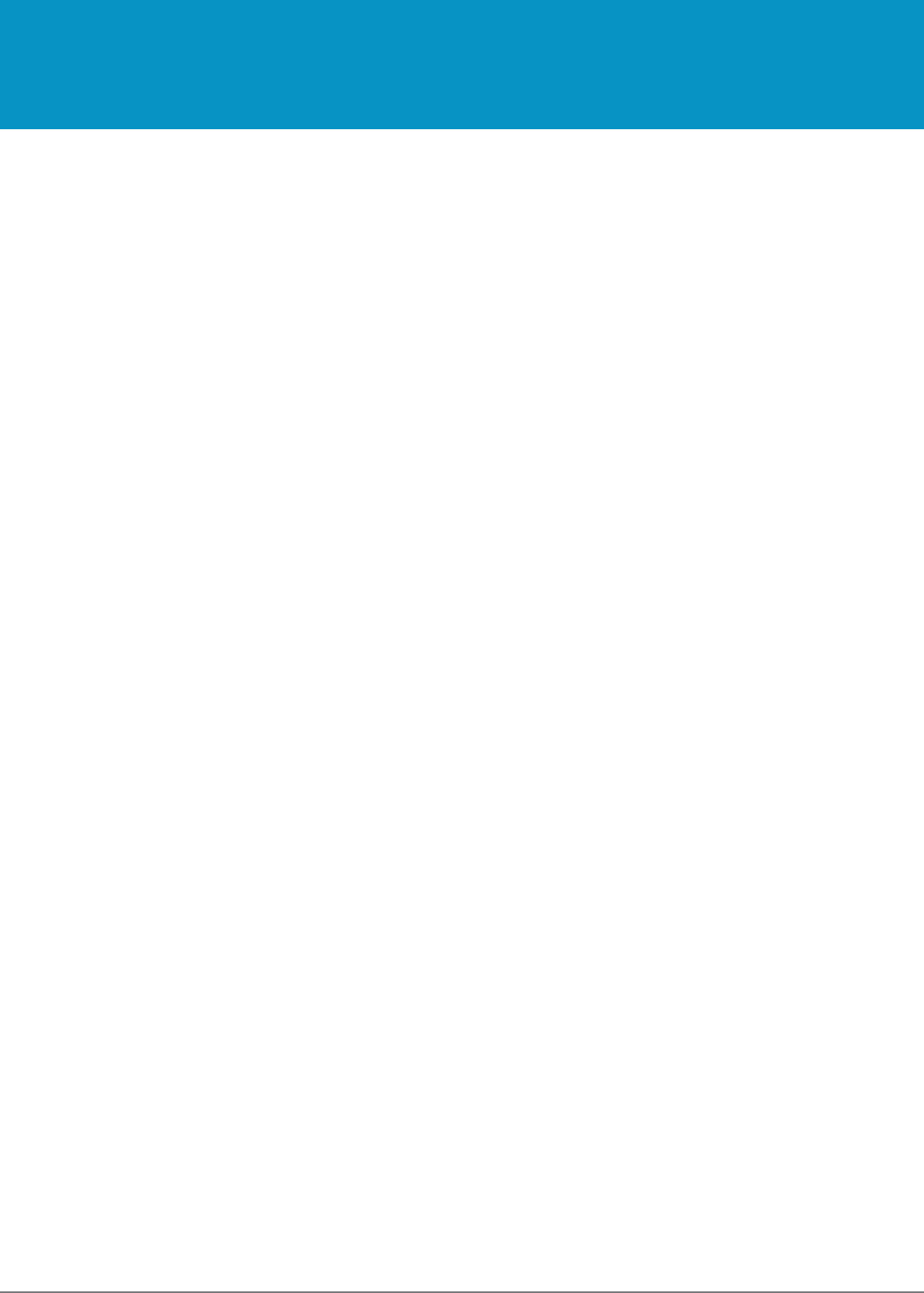
1166 UHF Reader User Guide V1.00© Technology Solutions (UK) Ltd 2016 10
BLUETOOTH
® WIRELESS TECHNOLOGY CONNECTION
The 1166
Bluetooth
® Handheld UHF RFID Reader is compatible with many other
Bluetooth
® wireless technology
enabled host devices including Android, Windows CE, Windows Mobile 5/6.1/6.5 and Windows 10/8/7/Vista/XP
CONNECTIONS
The connection to the 1166 is either via Bluetooth or USB. Bluetooth connections use either a Virtual Com Port
(VCP) or via the iAP protocol for Apple devices. Over USB only VCP is available.
For VCP the connection is established at 115200 baud, 8 data bits, no parity, 1 stop bit and RTS/CTS (hardware)
flow control.
www.tsl.com
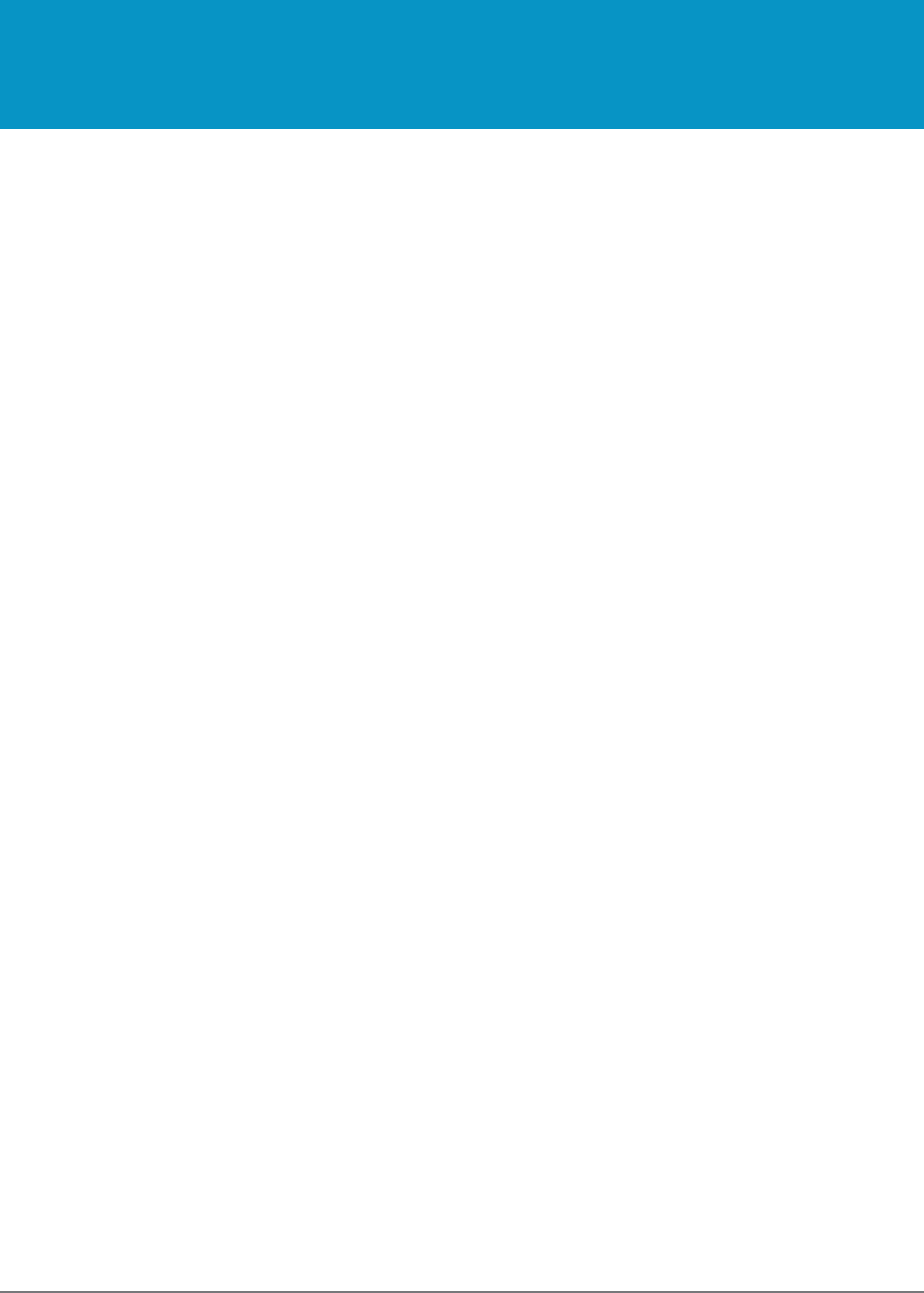
1166 UHF Reader User Guide V1.00© Technology Solutions (UK) Ltd 2016 11
EMBEDDED SD CARD
The 1166 Rugged Bluetooth® UHF RFID Reader is factory fitted with an embedded 2GB internal NAND storage SD
card, allowing millions of tags to be stored with time and date stamping.
By default the SD card is presented as a mass storage device when the 1166 is docked into a cradle connected
over USB to a host computer. This allows rapid download of log data and editing of the Auto Run File. The standard
ASCII 2 SD card commands can still be used, but only when the SD card is not in mass storage mode.
SUMMARY
Once an SD card is installed and logging is enabled a log file is created on the SD card. The file is located at the
root of the card and called “LOG.TXT”. All the lines from every response to every command that is executed by the
reader (including those performed from trigger actions) are appended to the end of the file. Events such as Power
up are also appended to the file.
The ASCII 2 Read Log File command (‘.rl’) is provided to enable or disable logging, to read the log file from the
card or to delete the log file from the card.
Please note that the log file can quickly become large relative to the speed at which it can be downloaded using
the Read Log File Command.
Start of a sample log output:
LOG FILE (LOG.TXT)
DT: 2013-11-15T16:46:58
EV: Log File created
CS: .ws -sa4 -sbepc -sd300833B2DDD9014000000000 -sl06 -so0002 -sts2 -dbepc -da330DE29525C0210005F5F88A
-dl06 -do0002
WW: 0
ME: No Transponder found
ER:005
DT: 2013-11-15T17:58:28
EV: Disconnected
DT: 2013-11-15T17:59:28
EV: Sleep
DT: 2013-11-18T09:18:21
Once an SD card is installed an Auto Run file can be created on the SD card. The Auto Run file contains a list of
ASCII 2 commands that are executed as the 1166 powers up. The file should be located at the root of the card
and called “AUTO.TXT”. Although the file can contain any valid ASCII 2 commands, one per line, it is intended that
these have the take no action ‘-x’ flag specified to allow the default parameters for any command to be changed
from the firmware defaults as the unit boots without actually executing the command.
For example to change the carrier power of the inventory command from 29dBm to 20dBm
‘.iv -o20 -x’ would be appended to the Auto Run file. As is the behaviour with command parameters this will set
the output power for the inventory command until a new value is sent with this command. Therefore the inventories
executed by the trigger, which executes ‘.iv’ will use the modified output power.
The Auto Run file can be manually created on the card before it is inserted into the 1166 or the ASCII 2 command
Write Command to Auto Run File ‘.wa’ can be used. The Read Auto Run File ‘.ra’ can be used to read back the
contents of the Auto Run file or delete the file from the card.
AUTO RUN FILE (AUTO.TXT)
www.tsl.com
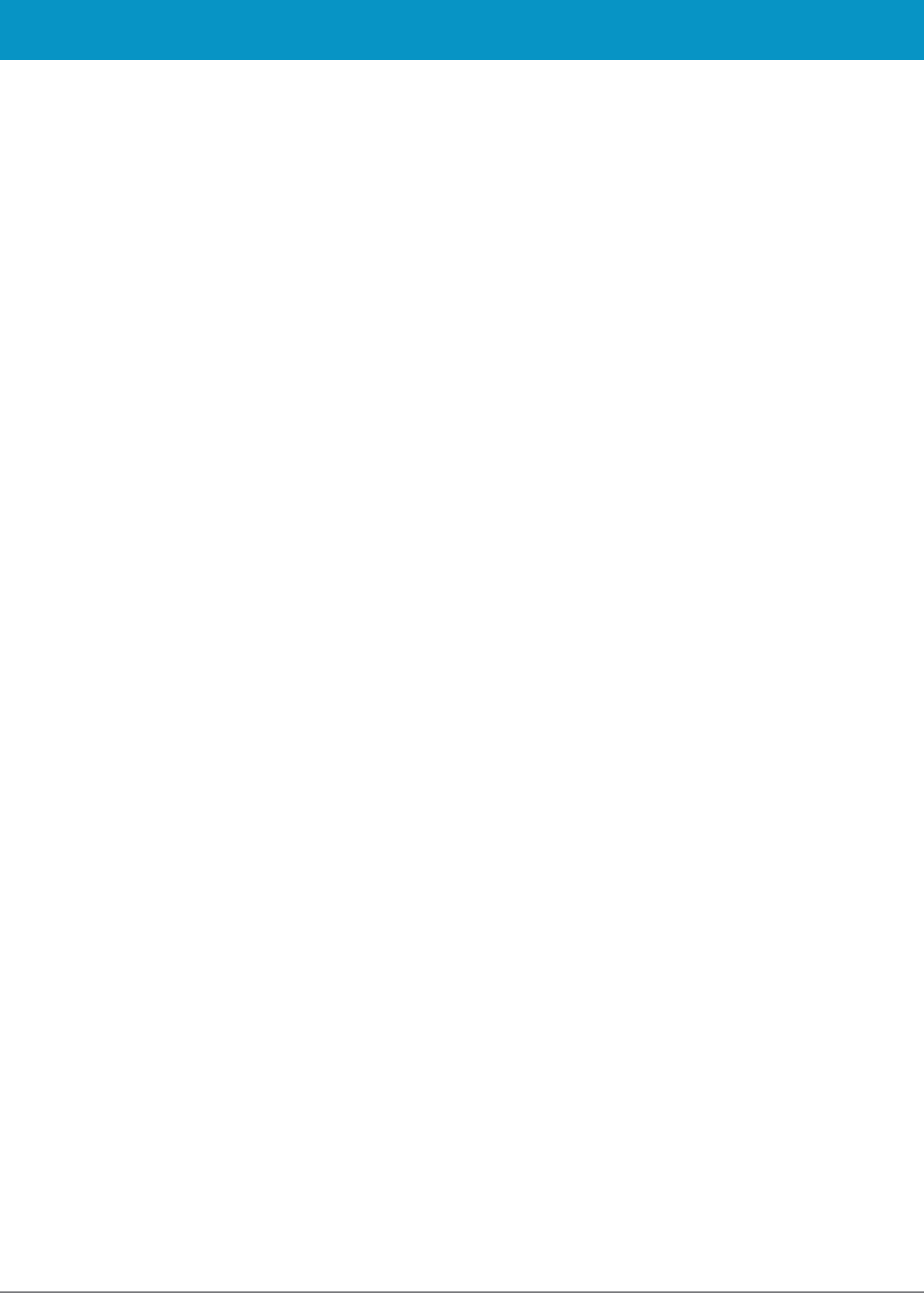
1166 UHF Reader User Guide V1.00© Technology Solutions (UK) Ltd 2016 12
EMBEDDED SD CARD
EV: Wake up
CS: .al –dlon
OK:
DT: 2013-11-18T09:19:22
EV: Sleep
DT: 2013-11-18T10:07:42
EV: Wake up
DT: 2013-11-18T10:07:42
EV: Connected USB
CS: .al –dlon
OK:
CS: .iv LCMD 000000 -qss0 –qta
EP: 330DE29525C0210005F5F8F2
EP: 221001500000000000000027
OK:
www.tsl.com
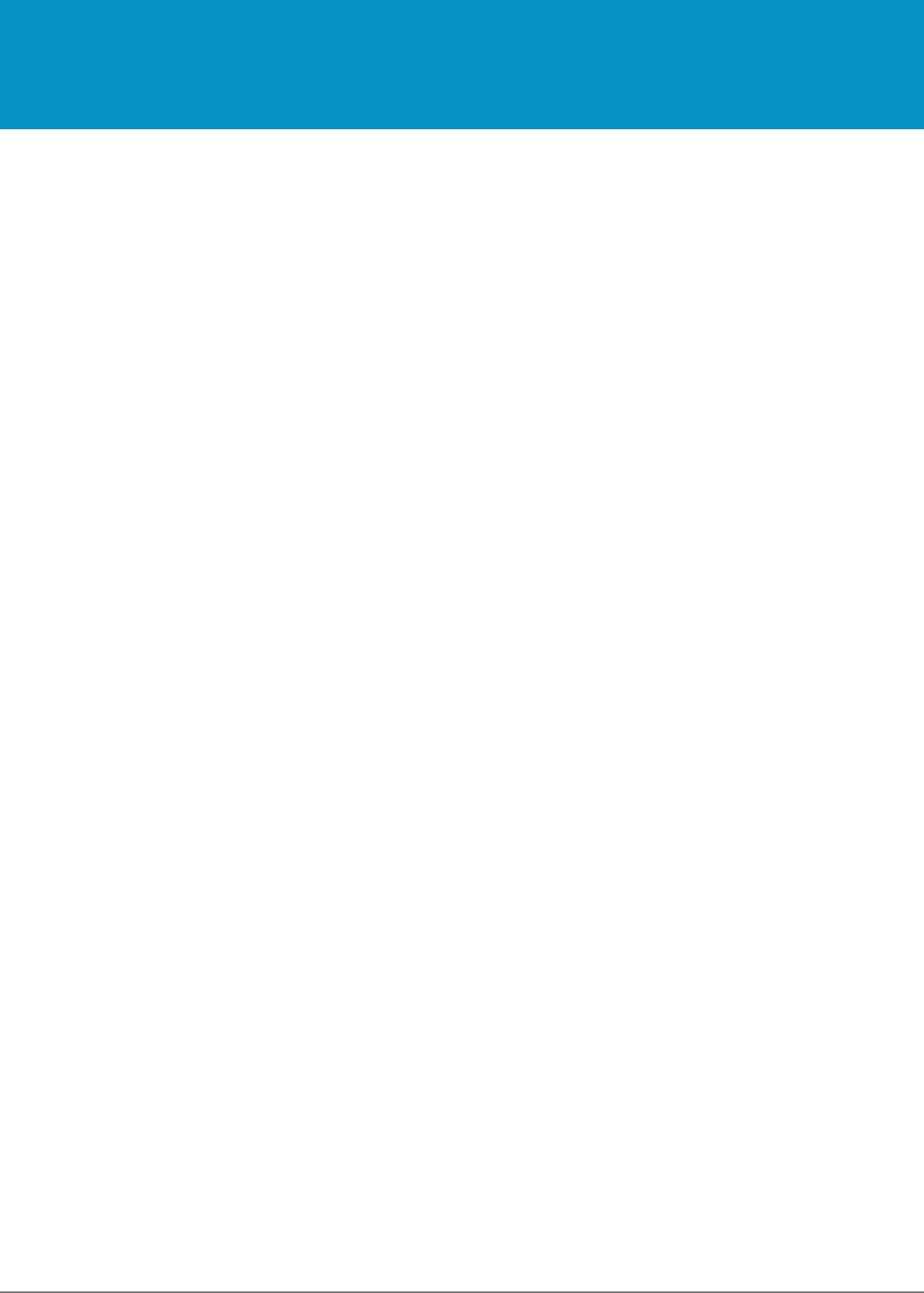
1166 UHF Reader User Guide V1.00© Technology Solutions (UK) Ltd 2016 13
SOFTWARE DEVELOPMENT
To make full use of the functionality of the 1166 UHF Reader, a customised software application will be required.
The new 1166
Bluetooth
® UHF RFID reader incorporates TSL’s unique ASCII protocol for faster and easier
application development. This sophisticated parameterised ASCII protocol provides the developer a powerful set
of commands that carry out multiple actions locally within the
Bluetooth
® reader. This approach enables multiple
tag operations executed using simple pre-configured ASCII commands which not only speeds integration of
the reader into applications but also abstracts the developer from some of the complexities of the underlying
Native API. Simple, text based commands are sent to the reader and responses are returned as text. This allows
straightforward access to RFID tag functions such as inventory, read and write. Details of the ASCII command
mode are available for download from https://www.tsl.com/1166-downloads/ .
www.tsl.com
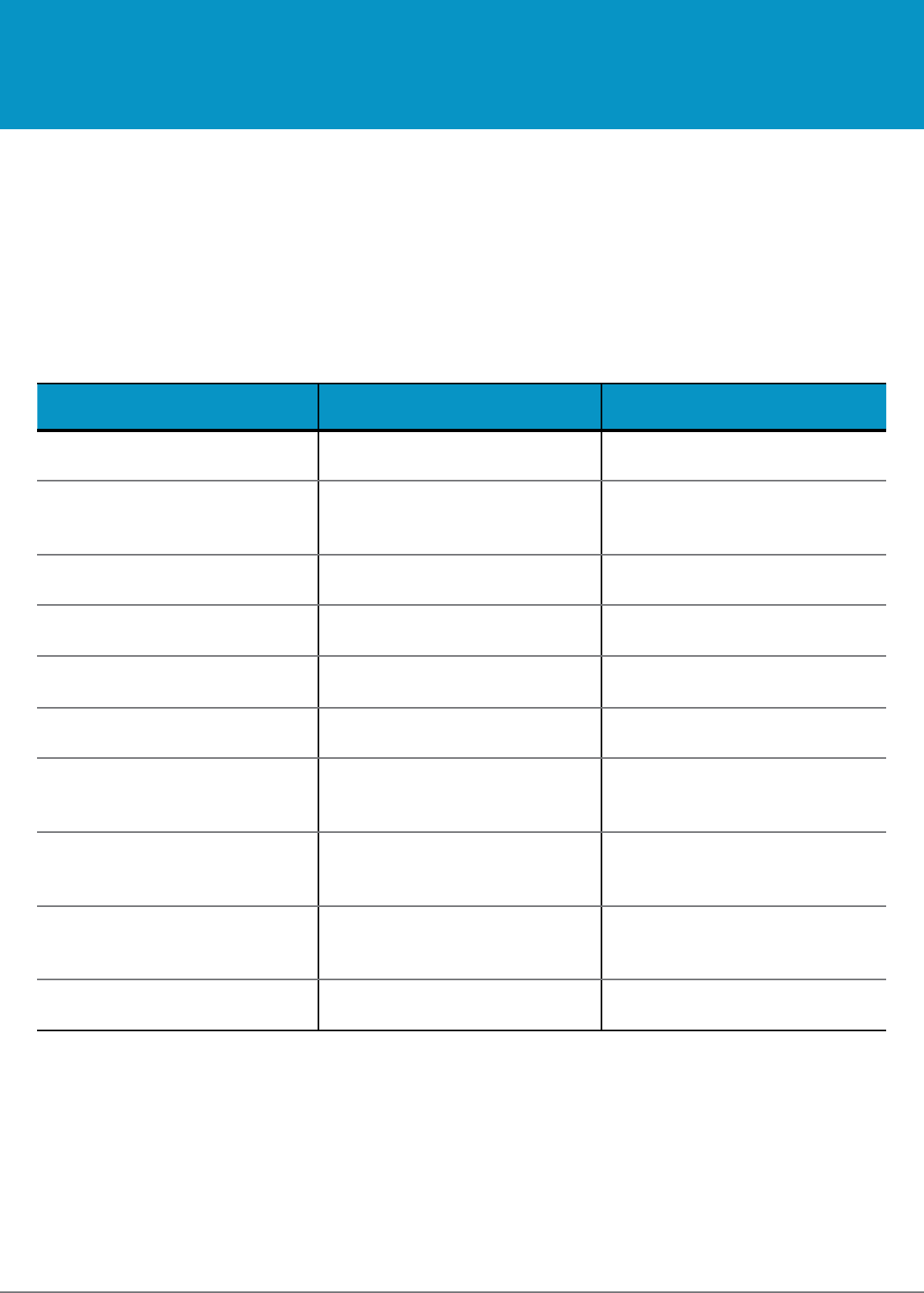
1166 UHF Reader User Guide V1.00© Technology Solutions (UK) Ltd 2016 14
MAINTENANCE
TROUBLESHOOTING
For trouble-free service please observe the following tips when using the 1166 UHF Reader:
●Protect the 1166 UHF Reader from temperature extremes. Do not leave it on the dashboard of a car on a hot
day, and keep it away from heat sources.
TROUBLESHOOTING AND MAINTENANCE
Symptoms Possible cause Action
Nothing happens when the trigger
button is pressed.
If the LEDs are not on then the
battery may be flat.
Charge the 1166 UHF Reader.
The 1166 UHF Reader may have
button actions disabled.
Check the 1166 UHF Reader
configuration and restore to defaults
if unsure.
The orange LED flashes rapidly
when charging.
There is a battery fault. Replace the battery pack.
The battery pack temperature is
outside recommended limits.
Ensure that charging only occurs
between 5°C and 40°C.
The host
Bluetooth
® discovery does
not find the 1166 UHF Reader.
The 1166 UHF Reader has powered
off.
Press the trigger button and ensure
the blue LED is flashing.
The 1166 UHF Reader is out of
range.
Move the 1166 UHF Reader closer
to the host.
The
Bluetooth
® friendly name of
the 1166 UHF Reader has been
changed.
Check the
Bluetooth
® friendly name
or restore the 1166 UHF Reader to
factory defaults if unsure.
Opening the
Bluetooth
® virtual com
port does not connect to the 1166
UHF Reader.
The host has paired to a different
Bluetooth
® device.
Pair to the required 1166 UHF
Reader.
The host
Bluetooth
® function has an
error.
Warm boot the host. If this does not
help, delete the 1166 UHF Reader
from the favourites list and re-pair.
Bluetooth
® pairing fails. The PIN on the 1166 UHF Reader
has been changed
Set the
Bluetooth
® PIN to a known
value
www.tsl.com
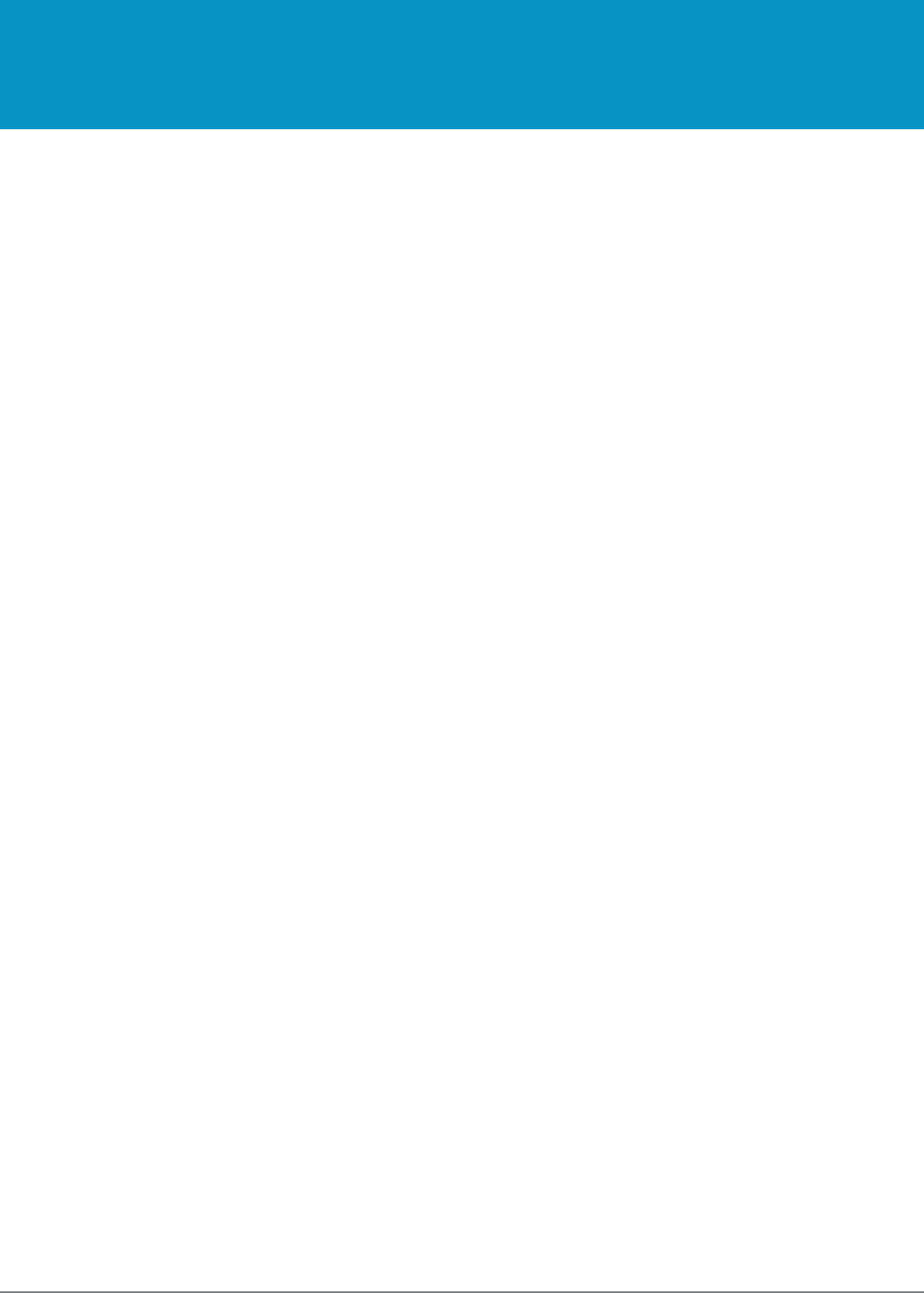
1166 UHF Reader User Guide V1.00© Technology Solutions (UK) Ltd 2016 15
INFORMATION TO THE USER – FCC
FCC warning statement:
This device complies with Part 15 of the FCC Rules.
Operation is subject to the following two conditions:
(1) This device may not cause harmful interference, and
(2) This device must accept any interference received, including interference that may cause undesired operation.
To comply with FCC RF exposure compliance requirements this unit must be operated in the hand with a
minimum separation of 20cm from the body and other persons. Other operating configurations should be avoided.
This unit must not be co-located or operated in conjunction with any other transmitter / antenna except those
already approved in this filing. Handheld configurations that provide no belt-clips or other body-worn accessories
and only transmit while in the hand and that maintain 20cm from the body, excluding hands, wrists, feet and
ankles, are allowed.
Changes or modifications not expressly approved by the party responsible for compliance could void the user’s
authority to operate the equipment
REGULATORY INFORMATION
RF EXPOSURE GUIDELINES
Safety information – To reduce RF exposure only use the device in accordance with the instructions supplied.
CANADIAN WARNING STATEMENTS
English
“Under Industry Canada regulations, this radio transmitter may only operate using an
antenna of a type and maximum (or lesser) gain approved for the transmitter by Industry
Canada.
To reduce potential radio interference to other users, the antenna type and its gain should
be so chosen that the equivalent isotropically radiated power (e.i.r.p.) is not more than that
necessary for successful communication.”
“This device complies with Industry Canada licence-exempt RSS standard(s). Operation is
subject to the following two conditions: (1) this device may not cause interference, and (2)
this device must accept any interference, including interference that may cause undesired
operation of the device.”
French
“Conformément à la réglementation d’Industrie Canada, le présent émetteur radio peut
fonctionner avec une antenne d’un type et d’un gain maximal (ou inférieur) approuvé pour
l’émetteur par Industrie Canada.
Dans le but de réduire les risques de brouillage radioélectrique à l’intention des autres
www.tsl.com
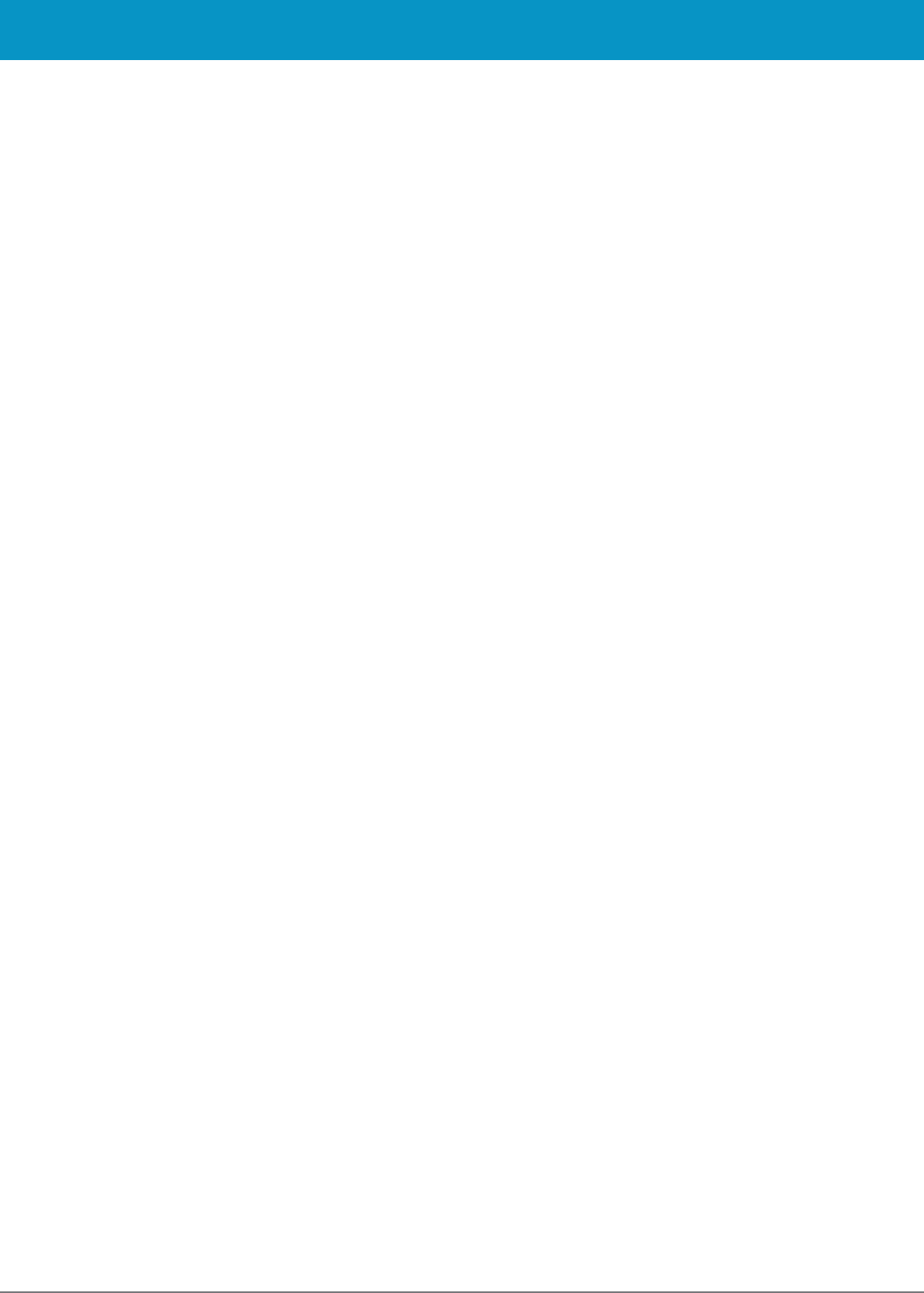
1166 UHF Reader User Guide V1.00© Technology Solutions (UK) Ltd 2016 16
utilisateurs, il faut choisir le type d’antenne et son gain de sorte que la puissance isotrope
rayonnée équivalente (p.i.r.e.) ne dépasse pas l’intensité nécessaire à l’établissement
d’une communication satisfaisante.”
“Le présent appareil est conforme aux CNR d’Industrie Canada applicables aux appareils
radio exempts de licence. L’exploitation est autorisée aux deux conditions suivantes : (1)
l’appareil ne doit pas produire de brouillage, et (2) l’utilisateur de l’appareil doit accepter
tout brouillage radioélectrique subi, même si le brouillage est susceptible d’en
compromettre le fonctionnement.”
REGULATORY INFORMATION www.tsl.com
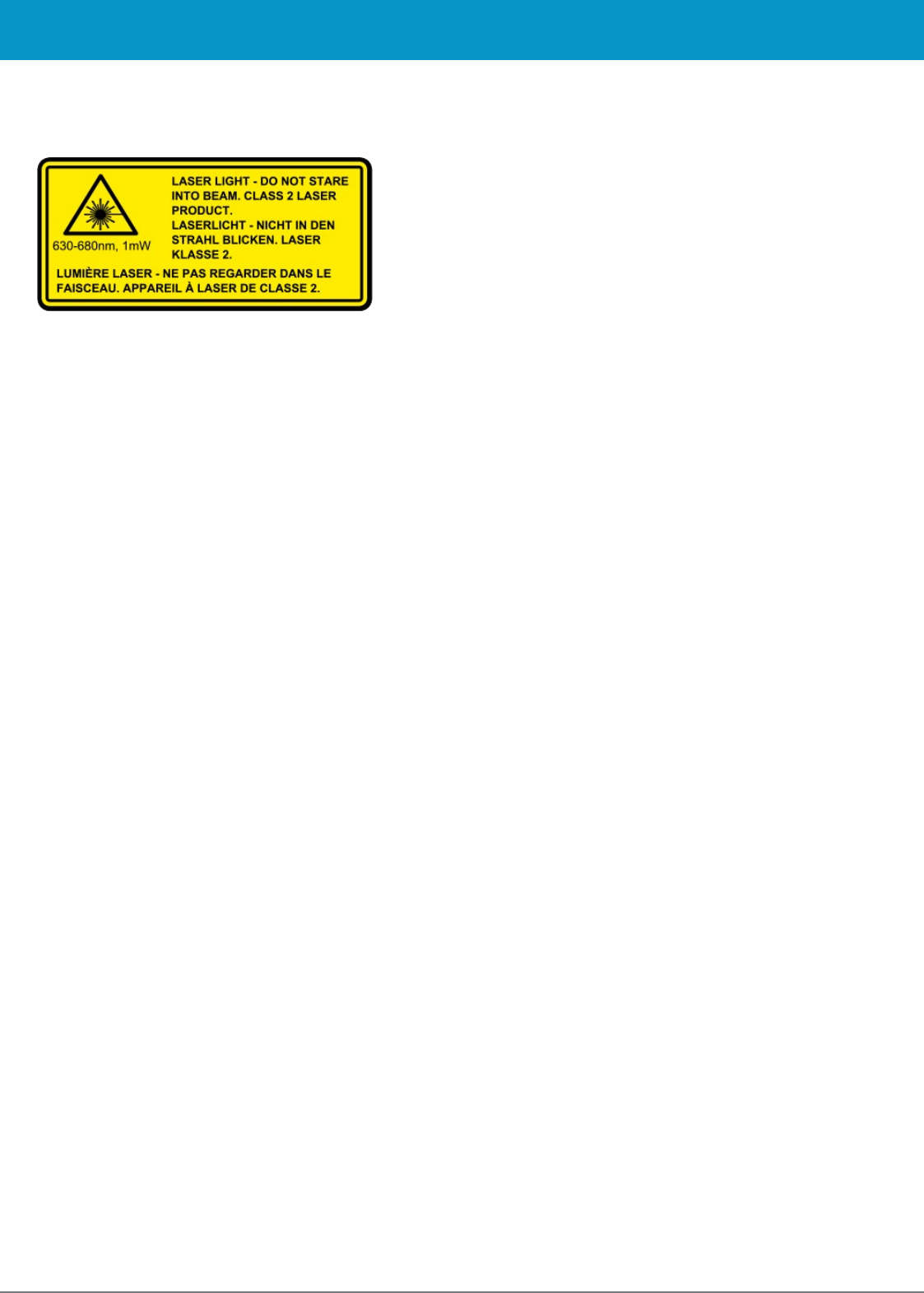
1166 UHF Reader User Guide V1.00© Technology Solutions (UK) Ltd 2016 17
LASER WARNING
A warning label is also shown on the back of the antenna when a barcode reader is fitted.
The barcode reader module complies with 21 CFR 1040.10 and 1040.11 except for deviations pursuant to Laser
Notice No. 50, dated June 24, 2007, EN60825-1:2007 and IEC60825-1:2001 (Ed.1.2)
Avoid unnecessary exposure to the laser light.
Caution: Use of controls, adjustments or performance of procedures other than those specified herein may result
in hazardous laser light exposure.
Caution: Viewing the illumination from the barcode reader with optical instruments may result in increased hazard.
REGULATORY INFORMATION www.tsl.com
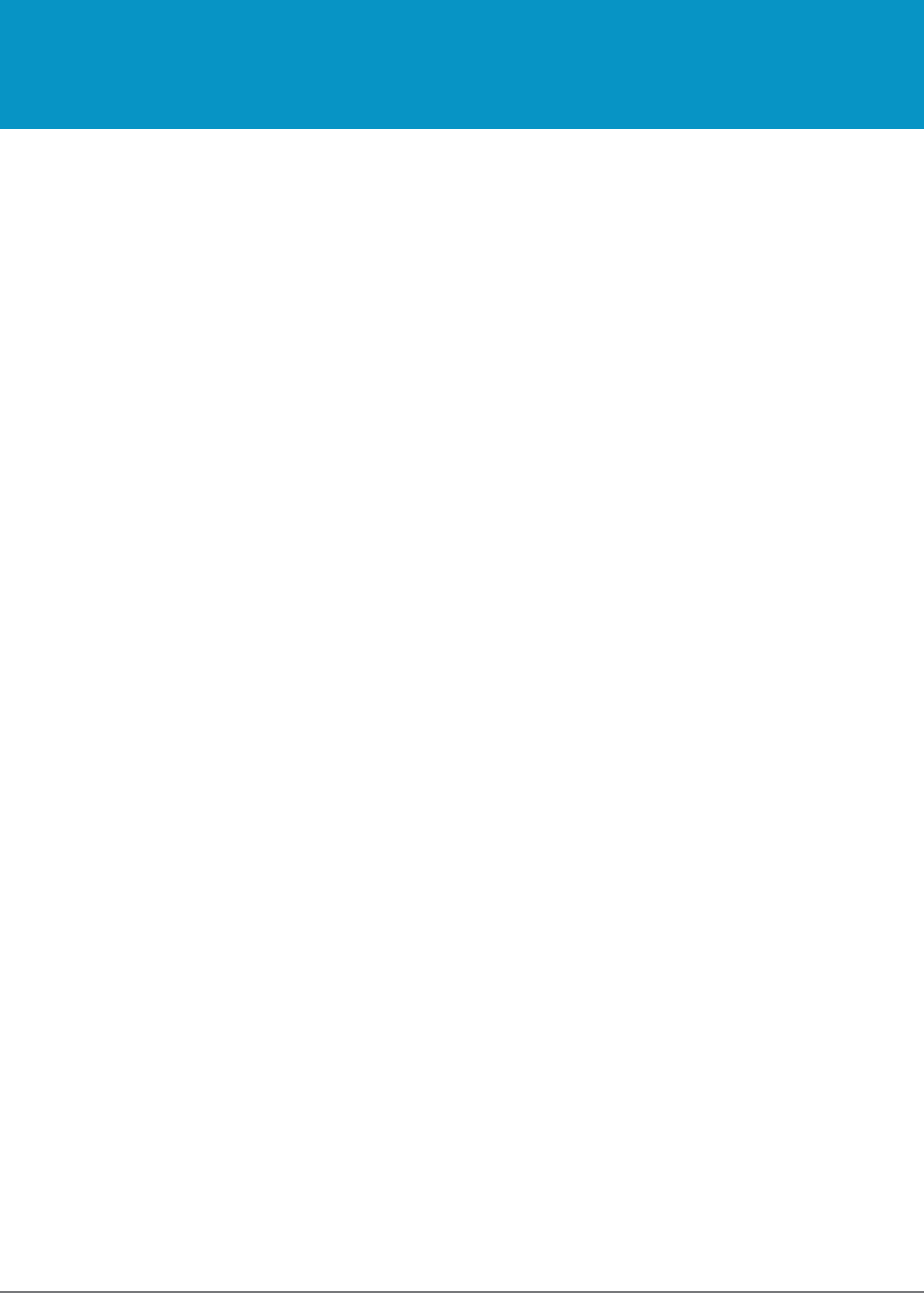
1166 UHF Reader User Guide V1.00© Technology Solutions (UK) Ltd 2016 18
Ergonomic Recommendations
Caution: In order to avoid or minimize the potential risk of ergonomic injury, follow the recommendations below.
Consult with your local Health & Safety Manager to ensure that you are adhering to your company’s safety
programs to prevent employee injury.
●Reduce or eliminate repetitive motion
●Maintain a natural position
●Reduce or eliminate excessive force
●Keep objects that are used frequently within easy reach Perform tasks at correct heights
●Reduce or eliminate vibration
●Reduce or eliminate direct pressure
●Provide adjustable workstations
●Provide adequate clearance
●Provide a suitable working environment
●Improve work procedures.
For vehicle installation and use
An air bag inflates with great force. DO NOT place objects, including either installed or portable wireless
equipment, in the area over the air bag or in the air bag deployment area. If in-vehicle wireless equipment is
improperly installed and the air bag inflates, serious injury could result.
RF signals may affect improperly installed or inadequately shielded electronic systems in motor vehicles (including
safety systems). Check with the manufacturer or its representative regarding your vehicle. You should also consult
the manufacturer of any equipment that has been added to your vehicle.
Power Supply
Use only TSL-approved cradles, chargers and power supplies with the 1166 UHF Reader. Use of an alternative
power supply will invalidate any approval given to this device, void the warranty for the product and may be
dangerous.
HEALTH AND SAFETY RECOMMENDATIONS
www.tsl.com
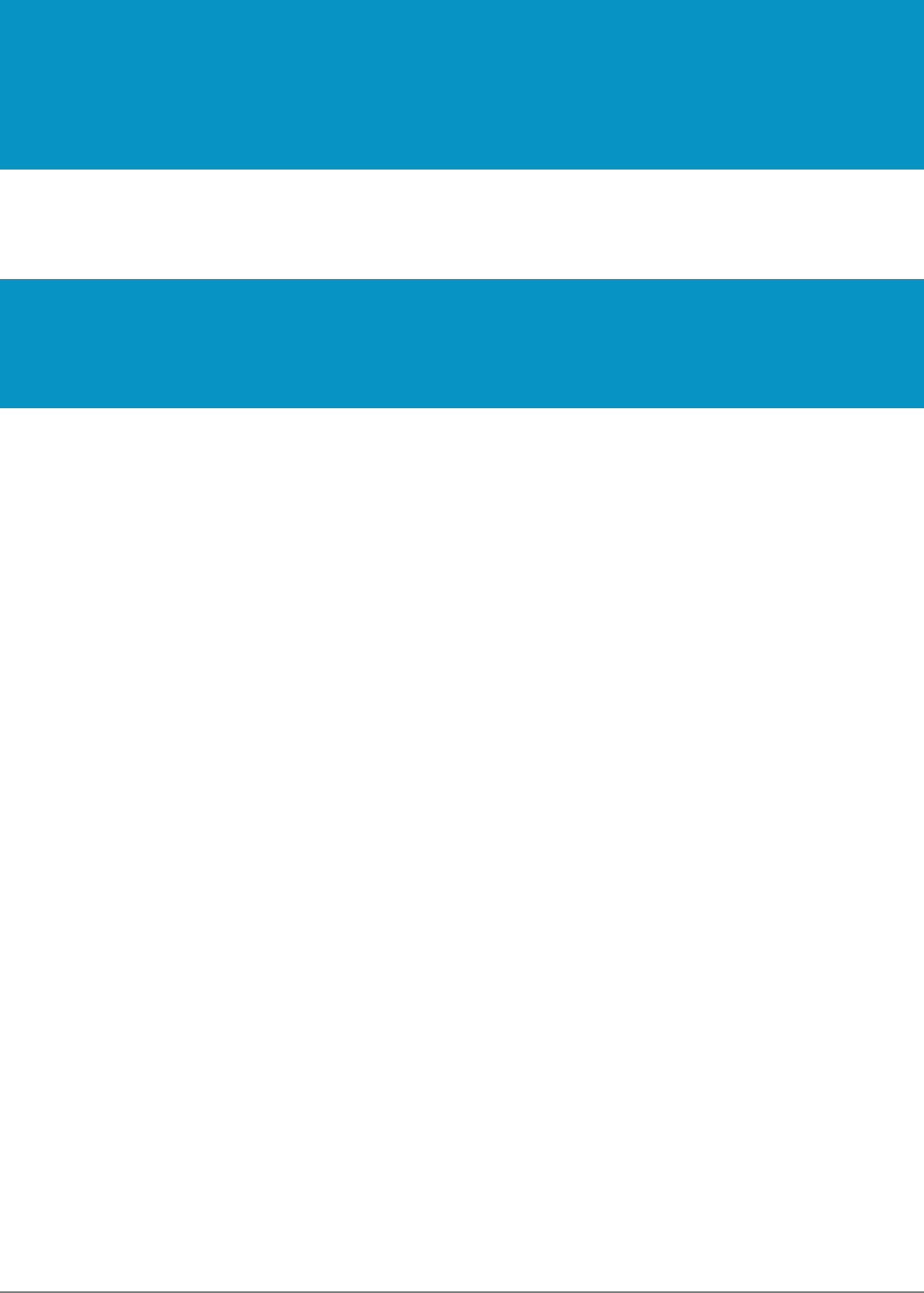
1166 UHF Reader User Guide V1.00© Technology Solutions (UK) Ltd 2016 19
For EU Customers: All products at the end of their life must be returned to TSL for recycling. For information on
how to return product please contact TSL.
WARRANTY
WASTE ELECTRICAL AND ELECTRONIC EQUIPMENT
(WEEE)
(A) Warranty
TSL’s hardware Products are warranted against defects in workmanship and materials for a period of twelve (12) months
from the date of shipment, unless otherwise provided by TSL in writing, provided the Product remains unmodified and is
operated under normal and proper conditions. Warranty provisions and durations on software, integrated installed systems,
Product modified or designed to meet specific customer specifications (“Custom Products”), remanufactured products, and
reconditioned or upgraded products, shall be as provided in the applicable Product specification in effect at the time of
purchase or in the accompanying software license.
(B) Spare Parts
Spare parts (i.e. parts, components, or subassemblies sold by TSL for use in the service and maintenance of Products) are
warranted against defects in workmanship and materials for a period of thirty (30) days from the date of shipment. Spare parts
may be new or originate from returned units under the conditions set forth in subsection D below.
(C) Repair of TSL branded hardware
For repairs on TSL branded hardware Products under this Agreement, including repairs covered by warranty, the repair services
provided are warranted against defects in workmanship and materials on the repaired component of the Product for a period
of thirty (30) days from the shipment date of the repaired Product, or until the end of the original warranty period, whichever is
longer. Any such defects shall be notified to TSL in writing within 7 days of the same becoming apparent.
(D) Product Service
Products may be serviced or manufactured with parts, components, or subassemblies that originate from returned products and
that have been tested as meeting applicable specifications for equivalent new material and Products. The sole obligation of TSL
for defective hardware Products is limited to repair or replacement (at TSL’s option) on a “return to base (RTB)” basis with prior
TSL authorisation.
Customer is responsible for prompt shipment to TSL and assumes all costs and risks associated with this transportation; return
shipment to the Customer will be at TSL’s expense. Customer shall be responsible for return shipment charges for product
returned where TSL determines there is no defect (“No Defect Found”), or for product returned that TSL determines is not
eligible for warranty repair. No charge will be made to Buyer for replacement parts for warranty repairs. TSL is not responsible
for any damage to or loss of any software programs, data or removable data storage media, or the restoration or reinstallation of
any software programs or data other than the software, if any, installed by TSL during manufacture of the Product.
www.tsl.com
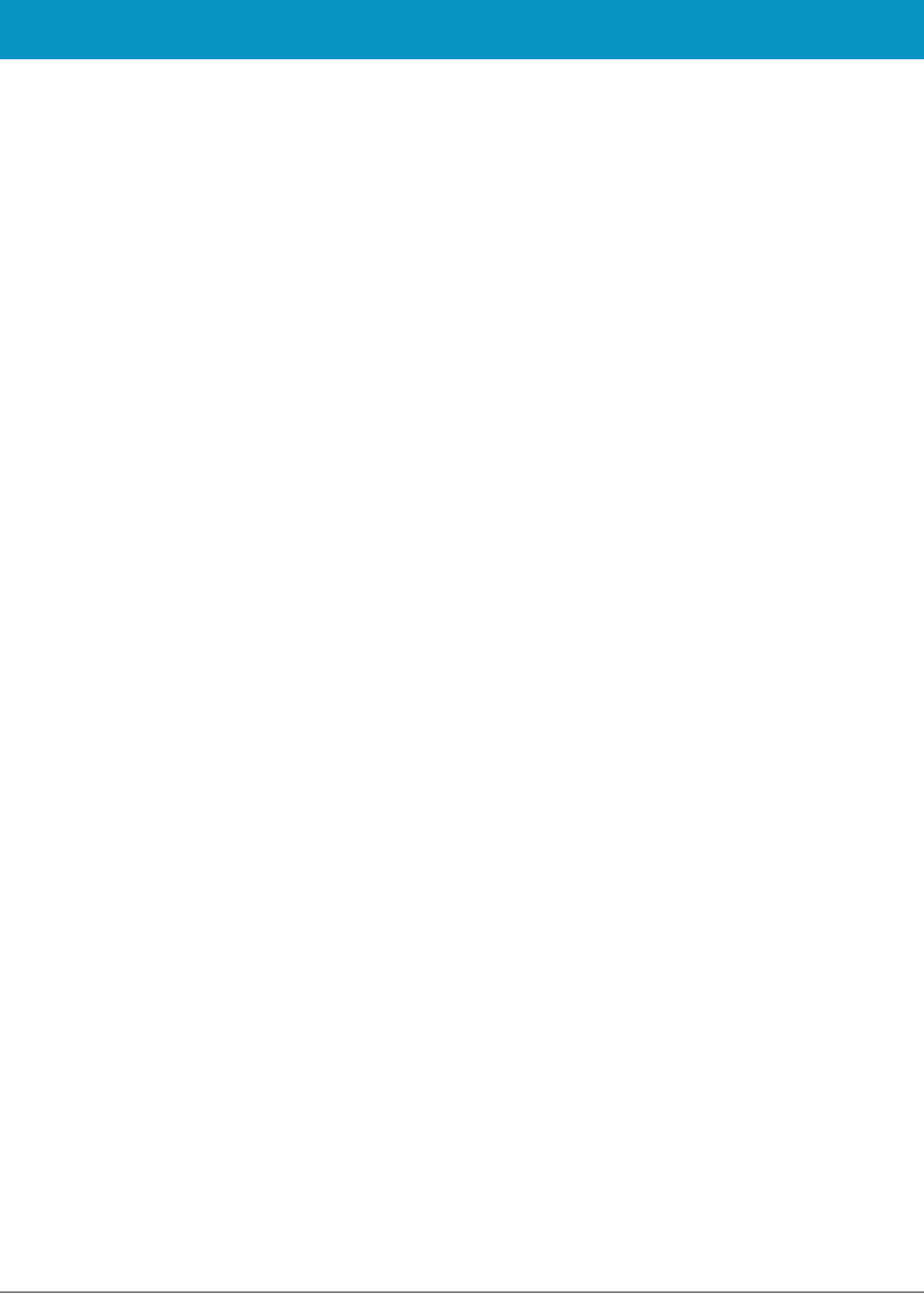
1166 UHF Reader User Guide V1.00© Technology Solutions (UK) Ltd 2016 20
(E) Original Warranty Period
Except for the warranty applying solely to the repaired component arising from a repair service as provided in Section C above,
the aforementioned provisions do not extend the original warranty period of any Product that had either been repaired or
replaced by TSL.
(F) Warranty Provisions
The above warranty provisions shall not apply to any Product:
(i) which has been repaired, tampered with, altered or modified, except by TSL’s authorized service personnel;
(ii) in which the defects or damage to the Product result from normal wear and tear, misuse, negligence, improper storage, water
or other liquids, battery leakage, use of parts or accessories not approved or supplied by TSL, or failure to perform operator
handling and scheduled maintenance instructions supplied by TSL;
(iii) which has been subjected to unusual physical or electrical stress, abuse, or accident, or forces or exposure beyond normal
use within the specified operational and environmental parameters set forth in the applicable Product specification; nor shall the
above warranty provisions apply to any expendable or consumable items, such as batteries, supplied with the Product.
EXCEPT FOR THE WARRANTY OF TITLE AND THE EXPRESS WARRANTIES STATED ABOVE, TSL DISCLAIMS ALL
WARRANTIES ON PRODUCTS FURNISHED HEREUNDER INCLUDING ALL IMPLIED WARRANTIES OF MERCHANTABILITY
AND FITNESS FOR A PARTICULAR USE. ANY IMPLIED WARRANTIES THAT MAY BE IMPOSED BY LAW ARE LIMITED IN
DURATION TO THE LIMITED WARRANTY PERIOD. SOME STATES OR COUNTRIES DO NOT ALLOW A LIMITATION ON
HOW LONG AN IMPLIED WARRANTY LASTS OR THE EXCLUSION OR LIMITATION OF INCIDENTAL OR CONSEQUENTIAL
DAMAGES OR CONSUMER PRODUCTS. IN SUCH STATES OR COUNTRIES, FOR SUCH PRODUCTS, SOME EXCLUSIONS OR
LIMITATIONS OF THIS LIMITED WARRANTY MAY NOT APPLY.
The stated express warranties are in lieu of all obligations or liabilities on the part of TSL for damages, including but not limited
to, special, indirect or consequential damages arising out of or in connection with the use or performance of the Product or
service. TSL’s liability for damages to Buyer or others resulting from the use of any Product or service furnished hereunder shall
in no way exceed the purchase price of said Product or the fair market value of said service, except in instances of injury to
persons or property.
TSL is not responsible for any damages incurred during shipment if the approved shipping container is not used. Shipping the
units improperly can possibly void the warranty. If the original shipping container was not kept, contact your local distributor or
TSL to have another sent to you.
TSL shall not be responsible for any injury, damage or loss of whatever kind caused directly or indirectly by the goods whether
as a result of their manufacture, operation, use or otherwise and the customer shall indemnify TSL from any claim arising from
any loss suffered by any third party.
WARRANTY www.tsl.com
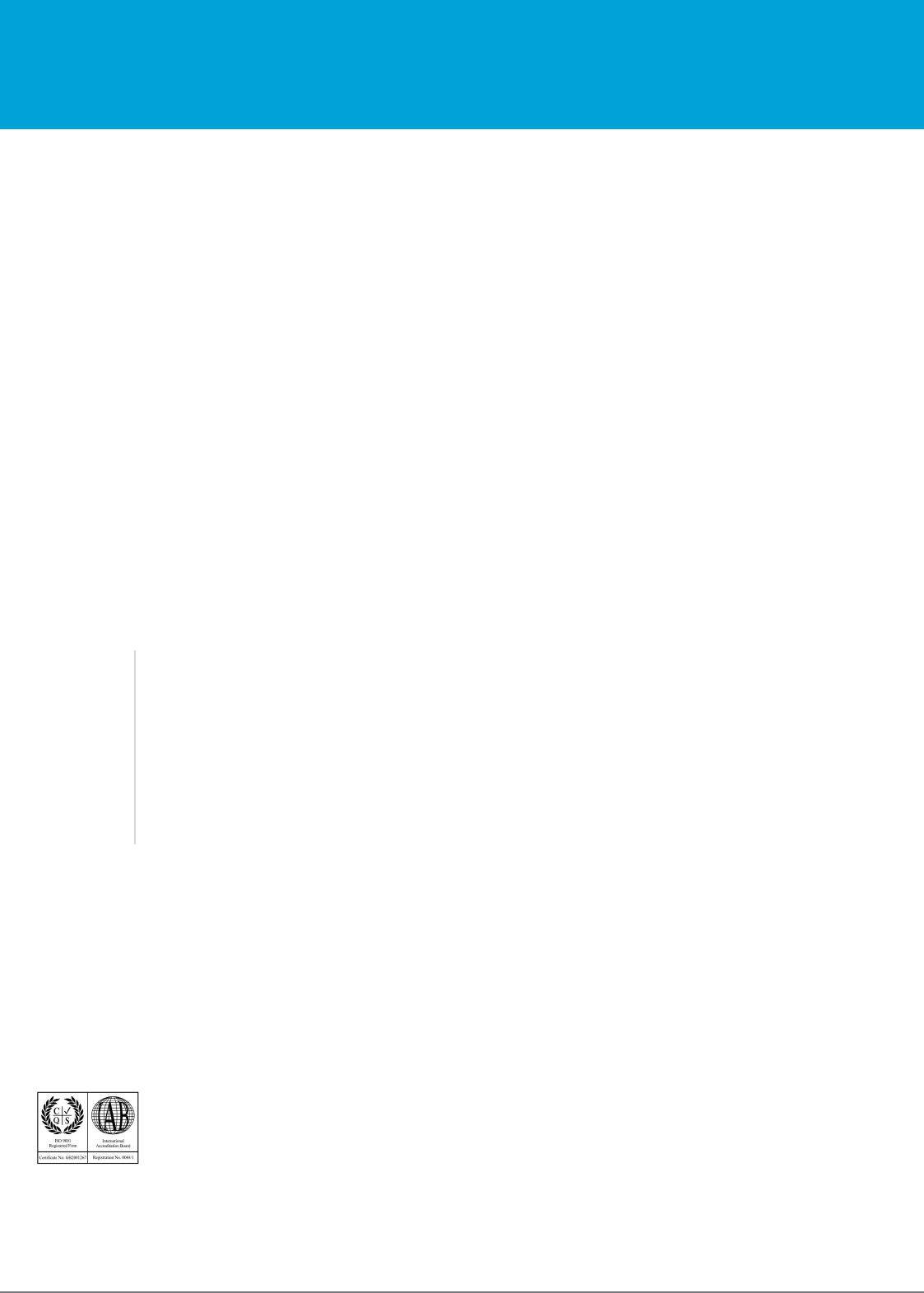
1166 UHF Reader User Guide V1.00© Technology Solutions (UK) Ltd 2016 21
ABOUT TSL
TSL designs and manufactures both standard and custom embedded, snap on and standalone peripherals for
handheld computer terminals. Embedded technologies include:
●RFID - Low Frequency, High Frequency & UHF
●
Bluetooth
® wireless technology
●Contact Smartcard
●Fingerprint Biometrics
●1D and 2D Barcode Scanning
●Magnetic Card Readers
●OCR-B and ePassport
Utilizing class leading Industrial design, TSL develops products from concept through to high volume manufacture
for Blue Chip companies around the world. Using the above technologies TSL develops innovative products in a
timely and cost effective manner for a broad range of handheld devices.
ABOUT
Address: Technology Solutions (UK) Limited, Suite A,
Loughborough Technology Centre, Epinal Way,
Loughborough, Leicestershire, LE11 3GE.
United Kingdom.
Telephone: +44 1509 238248
Fax: +44 1509 214144
Email: enquiries@tsl.com
Website: www.tsl.com
CONTACT
ISO 9001: 2008
© Technology Solutions (UK) Ltd 2016. All rights reserved. Technology Solutions (UK) Limited reserves the right to
change its products, specifications and services at any time without notice.
www.tsl.com